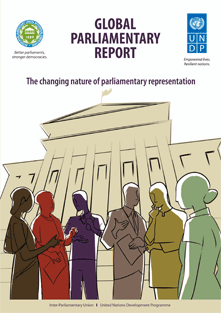The Global Parliamentary Report
The Global Parliamentary Report
October 30, 2015
The focus of this first Global Parliamentary Report is the evolving relationship between citizens and parliaments. The intention is to analyse how citizens’ expectations are changing, and how parliaments, politicians and parliamentary staff are responding.
There are three dominant pressures facing parliaments. Each is playing itself out in different ways and at different speeds in specific countries and regions. But there are common themes in the greater public desire for:
- information and influence in parliamentary work
- accountability and responsiveness to public concerns
- service and delivery to meet citizens’ needs
The report uses the experience of institutions and individual politicians to illustrate the challenges and the variety of initiatives aimed at enhancing parliamentary representation in different parts of the world. It aims to help parliaments and politicians understand the pressures better, identify some of the tensions that they need to manage and provide examples of good practice which might offer insight, inspiration or emulation.
Highlights
- MPs: There are 46,552 MPs in the world. The global average number of parliamentarians per country is 245. China has the largest parliament with 3,000 members in the Chinese National People’s Congress. The world’s smallest parliament is in Micronesia, with just 14 MPs.
- Women: There are 8,716 women parliamentarians globally, which is 19.25 per cent of the total number of MPs.
- Age: The global average age of an MP is 53. The average age for a woman MP is 50. Sub-Saharan African MPs have the lowest regional average age at 49 with Arab countries with the highest at 55.
- Budgets: The U.S. Congress has the largest parliamentary budget at US$5.12 billion. Saint Vincent and the Grenadines spends least on parliament budget at 1.8 million.

 Locations
Locations